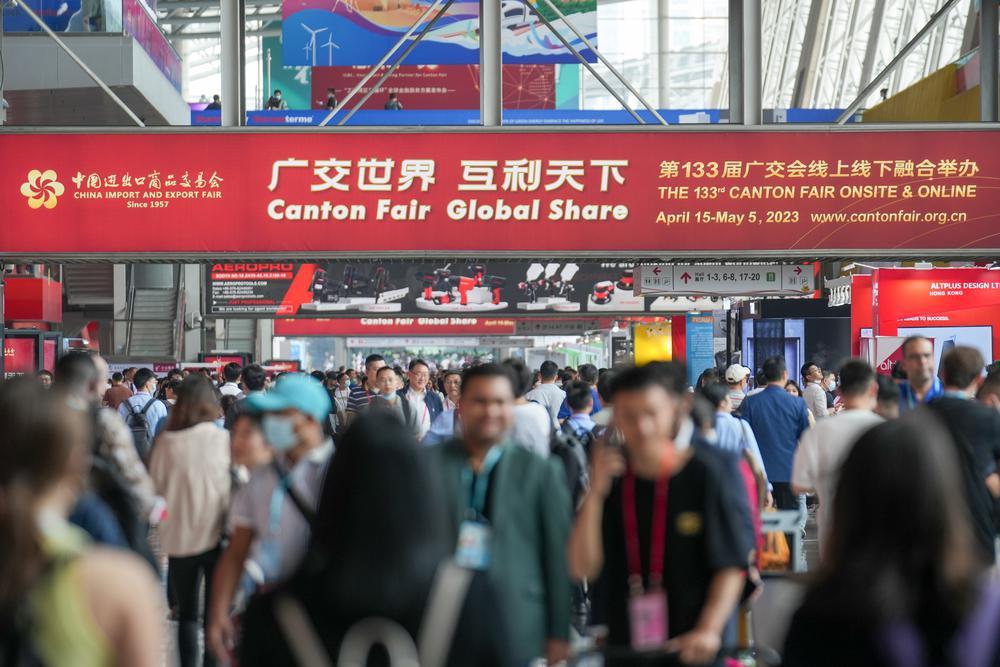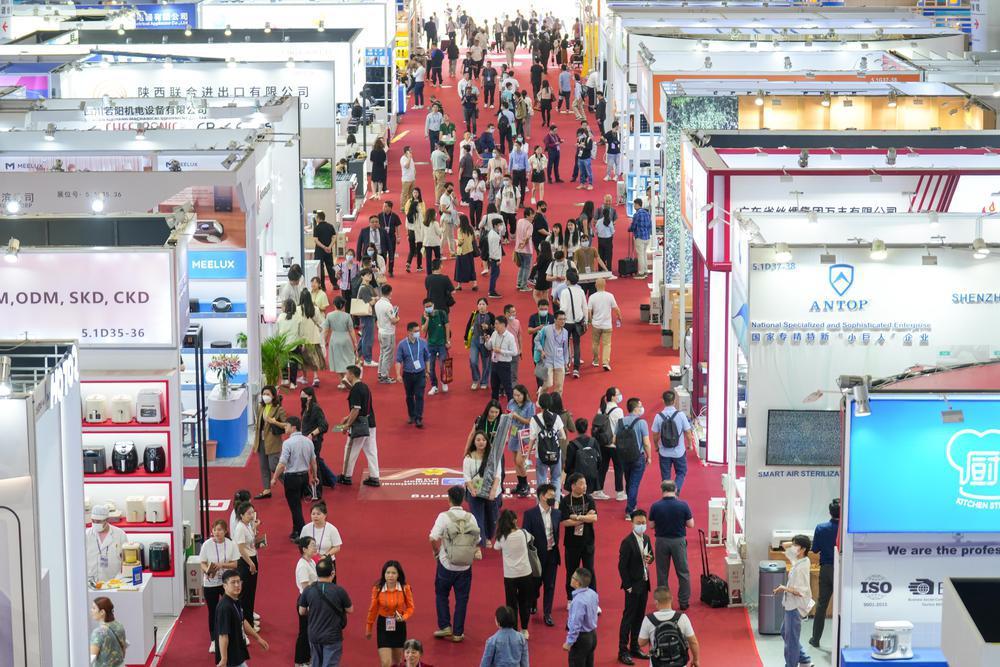The 133rd China Import and Export Fair, also known as the Canton Fair, kicked off in Guangzhou on April 15 and will run through May 5. This marks the first large-scale offline trade show to fully resume since the outbreak of the pandemic three years ago. The significance of this event is enormous, and there are various social and economic development factors to pay attention to.

Firstly, the restart of large-scale offline trade shows demonstrates that economic recovery and development have once again become the country's focus after the pandemic. Although many trade exhibitions resumed offline before the Canton Fair, it has always been China's premier trade fair for opening up to the outside world, with a window effect, impact, and status that can hardly be surpassed. The offline version of the Canton Fair can serve as a barometer of China's full control of the pandemic.
Secondly, this year's Canton Fair is the largest in scale, with record-breaking exhibition areas and the number of participating companies. Production companies accounted for 50.57% of exhibitors, and private enterprises accounted for 90.1%. This not only dispels concerns about the fair's declining influence but also demonstrates China's determination to further expand its opening-up.
Thirdly, the Canton Fair fully resumes its offline exhibitions while maintaining year-round online operations. This means that the offline exhibition has become a regular import and export trade event, while online trading makes possible the "never-ending Canton Fair".
Furthermore, this year's Canton Fair has expanded its exhibition area to 1.5 million square meters, with nearly 70,000 booths. There are 34,900 offline exhibitors, more than 9,000 new exhibitors, and 39,000 online exhibitors. The number of offline exhibitors is not significantly different from that of online exhibitors, indicating that offline and online exhibitions cannot completely replace each other, and instead, can complement each other.
In addition, the new Canton Fair also reflects the high-quality development. The number of high-quality characteristic enterprises has reached a new high. There are about 5,700 high-quality enterprises with titles such as industry leaders, little giants, manufacturing single champions, national high-tech enterprises, and national enterprise technology centers. These data reflect the achievements of China's industrial upgrading and the high-quality economic development.
Especially, the fair features three new exhibition areas for industrial automation and intelligent manufacturing, new energy and intelligent networked vehicles, and maternal and child products, as well as three new zones for smart home appliances, the grey-hair economy, and detection and protection products. They not only show the key areas for China's strategic emerging industries, but also highlight the market hotspots in the context of an aging society and the lifting of birth restrictions from the perspective of consumer demand.
In a sense, the Canton Fair is a window for China's opening up to the outside world, and its traditional role is becoming even more significant. The value of the Canton Fair in reflecting the achievements and direction of China's economic and industrial transformation and upgrading is increasingly being recognized. It also demonstrates the practical effects of boosting consumer confidence and expanding the scale and quality of domestic demand.
疫情三年后首次全面线下展,本届广交会意义重大
从4月15日开始至5月5日,第133届广交会在广州举办,这是疫情三年后首次全面恢复的线下展,意义十分重大,有多种社会经济发展因素值得关注。
首先,大型线下展的重启显示了疫情后经济复苏和发展重新成为国家的主战场。虽然广交会之前很多展会都恢复了线下展,但是,广交会长期以来都是中国对外开放的第一展,其对外开放合作的窗口作用、影响和地位都是难以替代的。此次广交会的线下展,可视为疫情全面受控的风向标。
其次,本届广交会是规模最大的一届,展览面积和参展企业数量均创新高。参展的生产企业占比达50.57%,民营企业占比达90.1%。显然,这既回应了那些担忧广交会影响力下降的质疑,又显示了中国进一步扩大开放的决心。
再次,本届广交会全面恢复线下展,同时全年常态化运营线上平台。这样,线下展成了定期的进出口贸易聚会,线上交易成了“永不落幕的广交会”。
而且,本届广交会展览总面积增至150万平方米,展位数量增至近7万个。线下展企业3.49万家,新参展企业超过9000家,线上展企业3.9万家。线下参展商与线上参展商相差不大,说明两者之间不可完全替代,可以相得益彰。

此外,新一届广交会也体现了高质量发展的特色。优质特色企业数量创新高。行业头部企业和拥有专精特新“小巨人”、制造业单项冠军、国家级高新技术企业、国家企业技术中心等称号的优质企业共计约5700家。这些数据既反映了我国产业升级的结果,也体现了经济高质量发展的趋势。
尤其是,新设工业自动化及智能制造、新能源及智能网联汽车、孕婴童用品3个新展区和智慧生活、“银发经济”、检测和防护用品3个新专区,既明确了我国战略性新兴产业发展的重点领域,也从消费需求角度展现了我国进入老龄社会和放开生育限制之后的市场热点。
某种意义上,广交会是中国对外开放的窗口,这种传统作用仍在加强。而反映中国经济和产业转型升级的成果和方向的价值正在日益得到提升。从中还可以观察到提振消费信心、扩大内需规模和档次的实效。
文丨广州市博士科技创新研究会会长、广东省体制改革研究会执行会长 彭澎
图丨羊城派资料图
翻译丨刘佳慧









